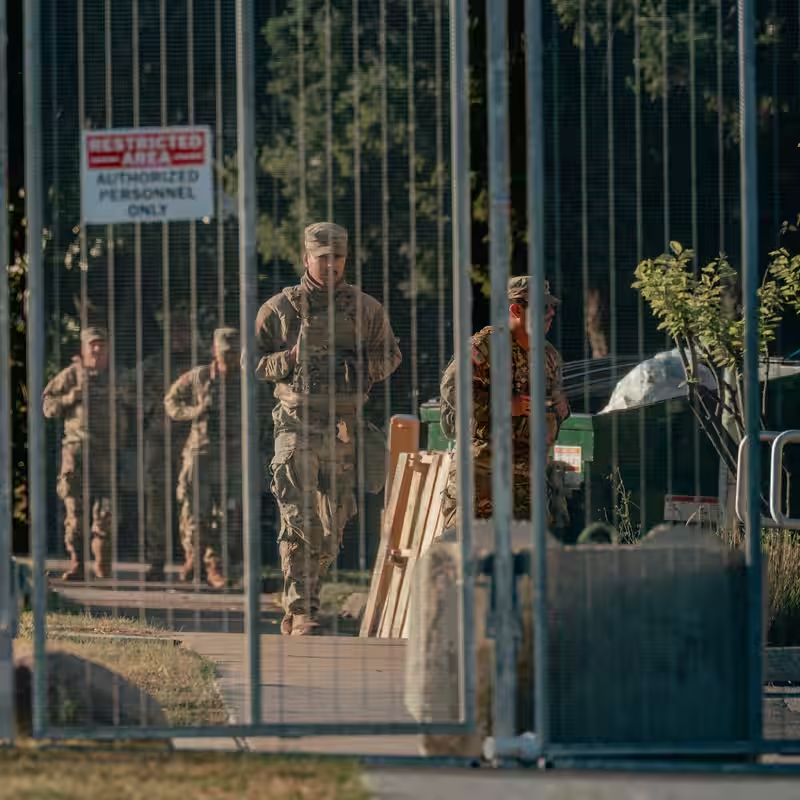Table of Contents
- Trump’s Emergency Request to the Supreme Court
- Why Chicago? The ICE Facility Flashpoint
- The Legal Battle Over Federal vs. State Power
- Federal Judges Push Back Hard
- What Happens Next?
- Sources
Trump’s Emergency Request to the Supreme Court
In a high-stakes move that tests the limits of presidential power, President Donald J. Trump has asked the U.S. Supreme Court to override lower courts and allow the deployment of National Guard troops in the Chicago area. The request, filed Friday by the Justice Department, seeks to station both Illinois and Texas National Guard units outside a federal Immigration and Customs Enforcement (ICE) processing center—despite fierce opposition from Illinois Governor J.B. Pritzker and local officials.
“The president is asking the Supreme Court to greenlight a military presence on American city streets,” said constitutional law expert Dr. Maya Lin. “This isn’t just about Chicago—it’s about whether the federal government can override state sovereignty during domestic protests.”
Why Chicago? The ICE Facility Flashpoint
The immediate justification centers on an ICE facility in the Chicago suburbs that has become a focal point for protests against Trump’s immigration policies. According to the Justice Department, federal agents there have faced “prolonged, coordinated, violent resistance” that “threatens their lives and safety.”
The administration wants to deploy 300 Illinois National Guard members already federalized by Trump, plus an additional 400 from Texas. Officials insist the troops would serve only in a “protective capacity”—not as law enforcement—but critics argue the distinction is meaningless when armed military personnel are stationed in civilian neighborhoods.
The Legal Battle Over Federal vs. State Power
At the heart of the conflict is a centuries-old tension between federal authority and states’ rights. Normally, National Guard units operate under the command of their state’s governor unless “federalized” by the president under specific conditions—such as to suppress “insurrection” or “rebellion.”
But lower courts have found no evidence of rebellion in Illinois. “A protest does not become a rebellion merely because of sporadic and isolated incidents of unlawful activity,” wrote a three-judge panel from the Seventh Circuit Court of Appeals, which included judges appointed by both Republican and Democratic presidents.
They also raised alarms about the use of out-of-state troops. Deploying Texas National Guard forces in Illinois, they wrote, constitutes “an incursion on Illinois’s sovereignty.”
Federal Judges Push Back Hard
U.S. District Judge April M. Perry initially blocked the deployment on October 8, stating she saw “no credible evidence that there is a danger of a rebellion in the state of Illinois.” The Seventh Circuit upheld her ruling, emphasizing that federal facilities remain open and immigration enforcement continues despite protests.
“The public has a significant interest in having only well-trained law enforcement officers deployed in their communities,” the appeals court declared, “and avoiding unnecessary shows of military force… except when absolutely necessary and justified by law.”
What Happens Next?
The Supreme Court has given Illinois officials until Monday at 5 p.m. to respond to Trump’s emergency application. Legal analysts say the Court’s decision—whether to grant or deny the request—could set a major precedent for executive power during domestic unrest.
Meanwhile, Governor Pritzker remains defiant. “Donald Trump will keep trying to invade Illinois with troops—and we will keep defending the sovereignty of our state,” he posted on social media. “Militarizing our communities against their will is not only un-American but also leads us down a dangerous path for our democracy.”
As tensions mount, all eyes are now on the Supreme Court. Will it side with the president’s expansive view of military authority—or uphold the principle that states control their own streets?




